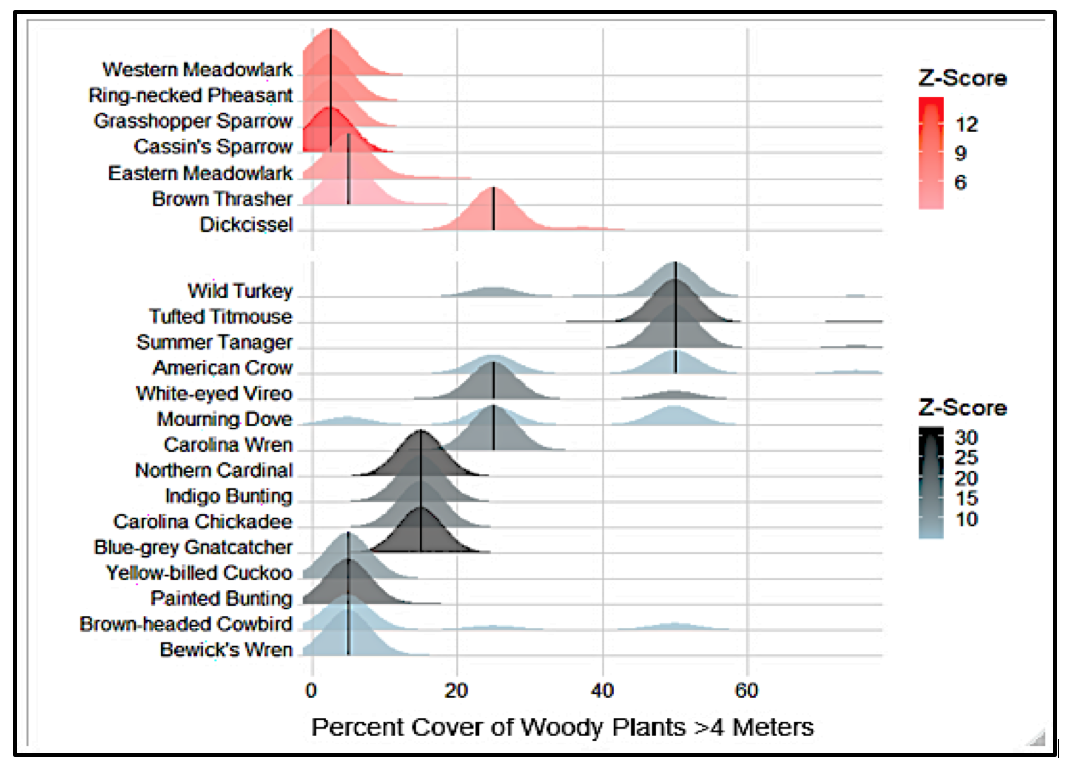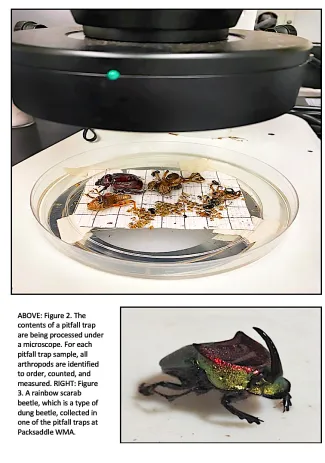
Quail Ecology and Management Project Report for May 2021
Provided by Oklahoma Cooperative Fish and Wildlife Research Unit, Oklahoma State University
Field work has ended in the quail study portion of the project. The graduate students are now analyzing data and writing their theses and dissertations. For the invertebrate and seed components, data collection will continue through spring.
Jennifer Knutson has analyzed the relationship between woody vegetation (shrubs and trees of different heights) and the bird communities across Beaver River, Cross Timbers, Packsaddle, and Sandy Sanders Wildlife Management Areas. Preliminary results indicate that members of the bird communities responded along a gradient of woody cover based on both vegetation height and amount of vegetation cover. Specifically, bird response (particularly for grassland and shrubland birds) is much more impacted by woody vegetation greater than 4 meters tall, and thresholds for negative responses are typically at low amounts of cover (Figure 1). Further analysis of these relationships are ongoing.

INVERTEBRATE STUDY: Pitfall sampling began during May at all 30 sites at Packsaddle WMA. These sites included the 18 sites sampled for seeds in January and 12 additional sites added to increase the diversity of habitat sites sampled. A total of 90 pitfall samples were collected (three pitfalls at each of the 30 sites), and the counting of arthropods in these samples has begun (Figures 2 and 3). Vegetative ground cover and vertical structure data were also collected at each microhabitat site (90 sites total).
RAPTOR STUDY: Monitoring continued through May. Three species of raptors were observed: Mississippi kites (36 seen), Swainson’s hawks (12 seen), and red-tailed hawks (10 seen), totaling 58 observations.
Raptors were observed less frequently in May than in January (66 total) and less than half as frequently as in April (118 total). This marked difference from April was due in large part to the complete absence of American kestrels from the study area in May. Kestrels represented 42 percent of all raptor observations in January (28 seen) and 70 percent of all raptor observations in April (83 seen). Additionally, Swainson’s hawk observations were identical between April and May (12 seen), though fewer red-tailed hawks were observed in May (10 seen) than in April (19 seen).
* * *
(This project is funded in part by the Oklahoma Department of Wildlife Conservation, Federal Aid Project F18AF001-10: Quail Ecology and Management II.)